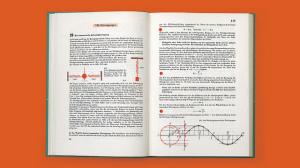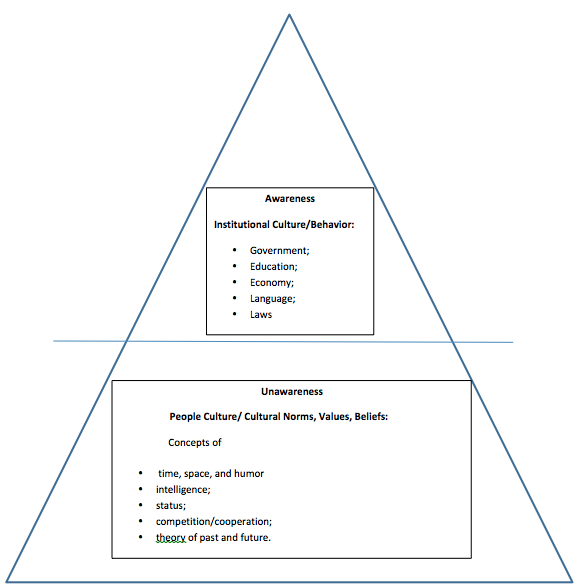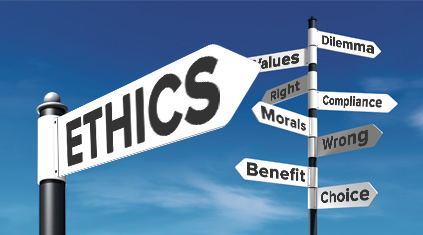You may be wondering how technical writing or technical communication differs from everyday writing, and we will explore the similarities and differences throughout this course, which uses free and openly licensed textbooks as a guide. One of the free and open textbooks we are using for this course is Technical and Report Writing created by Bay College Online Learning Department, and this book will be the tool we use to understand more about technical writing and communication. Other open access textbooks will also be used throughout the course, and you can locate more information about each book in the attributions at the end of their respective chapters. These sources explain that the field of technical communication is essential in a wide range of fields and occupations; it is a fully professional field with degree programs, certifications, and—yes!—even theory. Technical writing and workplace communication is a broad field with a significant amount of growth and income potential.
Technical writing is an audience-centered means of communication that provides a reader with clear and easy access to information. In the business world, time equates to profit, and profit is the force behind all business interaction. The technical writer and reader have a vis-à-vis relationship. The writer recognizes, respects, and addresses the importance of time in effective and efficient communication; as such, the writer provides documents written in detailed and specific formats, using clear language to send concrete information. The reader, in turn, should understand and analyze the information to give a thoughtful response.
The Meaning of “Technical”
Technical communication—or technical writing —is not limited to writing about a specific technical topic such as computers but about any technical topic. The term “technical” refers to knowledge that is not widespread, that is more the territory of experts and specialists. Whatever your major is, you are developing an expertise—you are becoming a specialist in a particular technical area. And whenever you try to write or explain something about your field or workplace, you are engaged in technical communication.
Academic Writing Versus Technical Writing
Technical writing requires a definite purpose, strict format, and use of appropriate language, which differentiates workplace communication and academic writing. The academic writer’s purpose may be to write an assignment, a story, a letter, or a poem. These works may or may not have a defined reader beyond the instructor. However, technical writing is created with a definite purpose and assumes there will be a reader. Regardless of the number of the intended readers, some of whom may not read the document, technical writing always has a primary reader.
Workplace Writing
However, the focus for this technical communications course is not necessarily to prepare students’ careers as technical writers, but to introduce students to the kinds of practical writing skills necessary for a technically-oriented, professional job. No matter what sort of professional work you do, you’re likely to do a significant amount of writing—and much of it will be technical in nature. The more you know about basic technical-writing skills, the better your writing. And that will be good for the projects you work on, for the organizations you work in, and—most of all—good for you and your career.
Considerations of Technical Documents
There are key components of what makes a document strong. Therefore, writers keep these items in mind while constructing technical documents.
1) The Importance of Audience
Another key part of the definition of technical communication is the receiver of the information—the audience. Technical communication is the delivery of technical information to readers (or listeners or viewers) in a manner adapted to their needs, level of understanding, and background. In fact, this audience element is so important that it is a cornerstone of this course: you are challenged to write about technical subjects but in a way that a beginner—a non-specialist—could understand. This ability to “translate” technical information to non-specialists is a key skill to any technical communicator. In a world of rapid technological development, people are constantly falling behind. Technology companies are constantly struggling to find effective ways to help customers or potential customers understand the advantages or the operation of their new products.
Not only is the the level at which you write important but so are the language choices you make. While you don’t have to write about computers or rocket science—you will learn to communicate clearly. Your goal is to learn strategies that allow you to write in a way that even Grandad can understand!
2) Formatting and Language

Formatting and appropriate language are the basic design elements of all technical documents. A format that shows a hierarchical structure and a coordinate structure of information leads the reader through text. Readers should be able to identify a writer’s organizational pattern quickly when reading a technical document. This sometimes refers to a document being “reader friendly.” In addition, using appropriate language is significant in providing the reader with a thorough understanding of the purpose of the document, how the document relates to the reader’s needs, and what action is expected of the reader.
A document may also have one reader (the primary reader) or several readers (the secondary readers). A primary reader is the person who ordered the report to be written or the person for whom a report is intended. These readers will usually read the entire report. Secondary readers are those readers who will read only the sections of the report that relate to them, their jobs, their departments, responsibilities, etc. For example, if a report was sent to several readers that detailed funding for different departments, the superintendent for piping may only want to read the section that relates to piping. This is where format, specifically the use of headings and document organization, is significant in allowing the reader easy access to information. The piping superintendent depends on a document’s usability so he can scan through the document and clearly find the heading that identifies his department and saves time.
3) Cultural Communication
Technical writers need to be aware of the differences between the behavior and the norms, beliefs, and values of specific cultures. According to Edward T. Hall and Mildred Reed Hall, in Understanding Cultural Differences, each culture operates according to its own rules (1990, pp. 3-4). Hall and Hall add that problems occur when members of one culture apply their rules to another culture (1990, pp. 3-4). To communicate effectively with other cultures, the technical writer needs to not only be aware of rules governing behaviors that can be observed but also of the not-so-obvious rules that govern the norms, beliefs, and values of the people of a culture. The invisible rules of a culture dramatically impact the acceptance of ideas, plans, and strategies. The Cultural Iceberg illustrates patterns of world communication, showing indicators of Institutional Culture (the obvious behavior of a culture), which can be clearly seen as the tip of the iceberg, and People Culture (the norms, beliefs and values of a culture), which cannot be seen and which are the barriers to successful communication.

4) Ethics

Technical writers, and, to some degree, all writers have a responsibility to their readers and to their employers to follow ethics when writing reports. Technical writers must use words that demonstrate valid appeals to reason, avoiding emotional words and phrases that appeal to basic emotion instead of justifiable reasoning. In addition, technical writers must use valid references to support ideas and strategies, avoiding referencing non experts to sway readers’ support. Also, technical writers must use accurate numbers to report data, avoiding charts and tables that skew data. Using any type of fallacies in technical writing is unethical and could result in dire consequences.
Not only do technical writers have a responsibility to report accurate information, but they also have a responsibility to credit accurate sources of information. At no time is it acceptable to rearrange information in order to attempt to indicate that the writer is the source of someone else’s idea or to indicate that the writer read a report that included information he/she cited, when the primary source of the information was cited in another report. All sources must be referenced accurately in the text and cited on a reference page.
Daniel G. Riordan (2005), in Technical Report Writing Today, cites Dombrowski to define three threads of ethics:
One major thread is that the communicator must be a good person who cares for the audience. Communicators must tell the truth as convincingly as possible, because truth will lead to the good of the audience. Another thread is that the communicator must do what is right, regardless of possible outcomes. A third thread is that communicators must act for the greatest good for the greatest number of people (p. 16).
In addition, Riordan (2005) references the “code of ethics of the Society for Technical Writers, and cites five of the code’s tenants:
My commitment to professional excellence and ethical behaviors means that I will…
- Use language and visuals with precision.
- Prefer simple direct expression of ideas.
- Satisfy the audience’s need for information, not my own need for self-expression.
- Hold myself responsible for how well my audience understands my message.
- Report the work of colleagues, knowing that a communication problem may have more than one solution (Riordan, 2005, pp. 15-16).
Key Takeaways
- Technical writing requires the communicator to share information in a clear, concise, and ethical manner.
- Considering your audience and their needs is essential to creating successful technical communication.
- Evaluating the audience’s needs prior to designing the technical communication will help you achieve a final product that meets the readers needs and serves the appropriate function.
Chapter adapted from “Chapter 1 Introduction to Technical & Report Writing” of ENGL 145: Technical and Report Writing, 2017, written by Amber Kinonen and used according to Creative Commons CC-BY-4.0